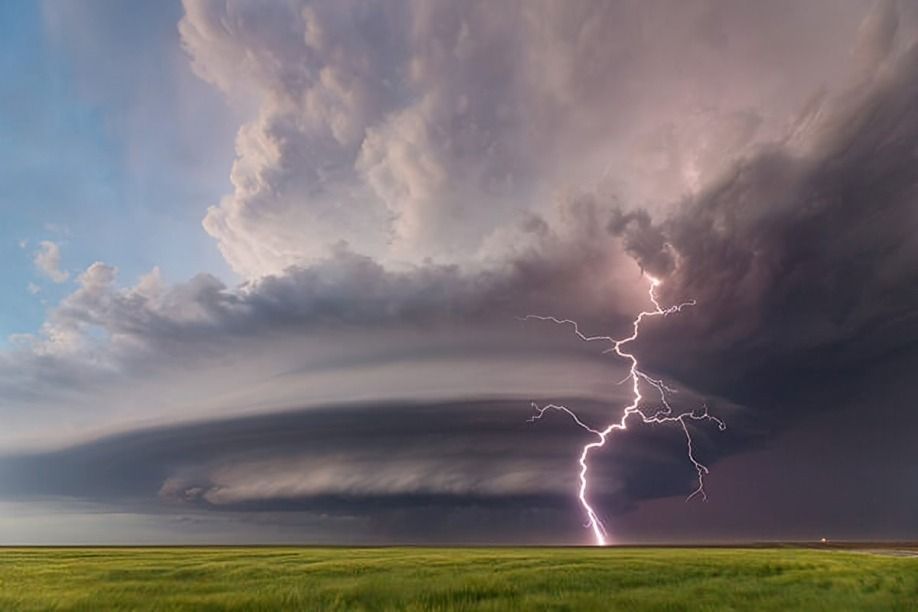
“
Thunderstorms are inspiring displays of nature's power, weaving together lightning, thunder, and torrential rain into dramatic spectacles that both mesmerize and teach us about the forces at work in our atmosphere. Join us and learn 20 captivating Unique Thunderstorm Facts, designed to illuminate young minds.1
1
”
A thunderstorm is a weather event characterized by the presence of lightning and its acoustic effect on the Earth's atmosphere, known as thunder. It is usually accompanied by heavy rain, strong winds, and sometimes hail.1
Thunderstorms form when warm, moist air rises into cooler air. As the warm air rises, it cools and condenses, forming clouds. When the condensation releases heat, it warms the air around it, causing it to rise even more, creating a cycle that leads to a thunderstorm. 2
There are three main types of thunderstorms: single-cell, multi-cell, and supercell. Single-cell thunderstorms are small and short-lived, multi-cell storms consist of several cells at different stages of development, and supercell storms are severe and can produce tornadoes.3
Lightning is a sudden electrostatic discharge that occurs during a thunderstorm. It can travel between clouds, within a cloud, or between a cloud and the ground. Lightning heats the air around it to about 30,000 Kelvin (53,540 degrees Fahrenheit), which is hotter than the surface of the sun! 4

Supercell thunderstorms can produce tornadoes, which are rotating columns of air extending from a thunderstorm to the ground. These tornadoes can cause significant damage and are very dangerous.
Thunder is the sound caused by the rapid expansion of air surrounding a lightning bolt's path. The loud noise occurs because the air expands faster than the speed of sound, creating a shock wave.5
A thunderstorm typically goes through three stages: the developing stage, the mature stage, and the dissipating stage. The developing stage involves updrafts of warm air. In the mature stage, the storm is at its peak with heavy rain, lightning, and thunder. 6
Updrafts and downdrafts are essential parts of a thunderstorm. Updrafts carry warm air and moisture upward, while downdrafts bring cold air and precipitation down to the ground. 7
A thunderstorm watch means that conditions are favorable for thunderstorms to develop, while a thunderstorm warning means that a thunderstorm has been spotted or indicated by radar and you should take shelter immediately. 8
Most lightning within a thunderstorm is negative, meaning it travels from a negative charge area to a positive charge area. However, positive lightning, which travels from a positive charge area to a negative charge area, is less common but more powerful and can strike farther away from the storm. 9
Heat lightning is a term used for the faint flashes of lightning on the horizon or other clouds from distant thunderstorms that are too far away for the thunder to be heard. It is regular lightning, but its thunder dissipates over distance, so only the light is visible.10
Hailstones are chunks of ice that form within strong thunderstorms with intense updrafts. These updrafts carry raindrops upward into extremely cold areas of the atmosphere where they freeze. They can fall to the ground when they become too heavy.11
Thunderstorms are most common in tropical and subtropical regions. Florida, USA, is known as the "lightning capital" of the United States due to its high frequency of thunderstorms. 12
Thunderstorm clouds, known as cumulonimbus clouds, can reach impressive heights. They often extend up to 40,000 feet (12,192 meters) and sometimes even higher into the atmosphere.13
Heavy rain from thunderstorms can lead to flash flooding, a rapid rise in water levels that can be very dangerous. It’s important to be aware of flash flood warnings during severe thunderstorms.14
During a thunderstorm, it's essential to stay indoors and avoid using electrical appliances. If you are outside, avoid tall objects like trees and metal structures, as they can attract lightning. 15
Meteorologists use various tools to predict thunderstorms, including weather radars, satellites, and computer models. These tools help forecast the development and movement of thunderstorms. 16
Microbursts are intense, localized downdrafts that occur during thunderstorms. They can cause significant damage on the ground, similar to a small tornado, and are dangerous for aircraft. 17
Around the world, approximately 40,000 thunderstorms occur each day. This means about 1,800 thunderstorms are happening at any given moment, showcasing the global nature of these weather events. 18
Thunderstorms are not unique to Earth. Scientists have observed thunderstorms on other planets, such as Jupiter and Saturn. These extraterrestrial storms can be even more powerful than those on Earth. 19


